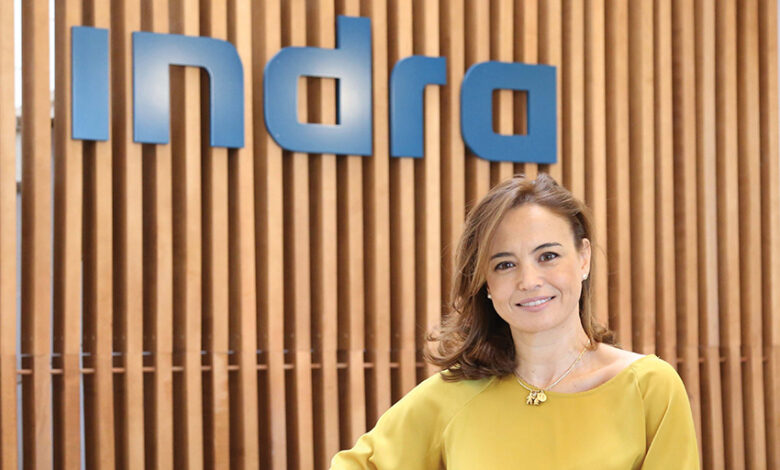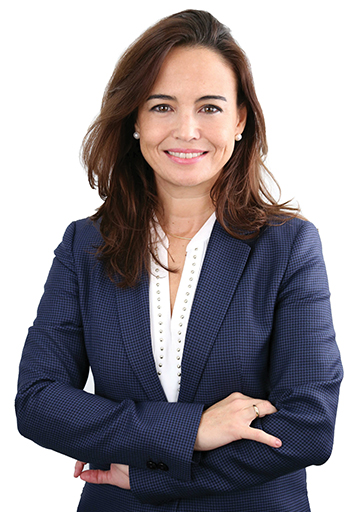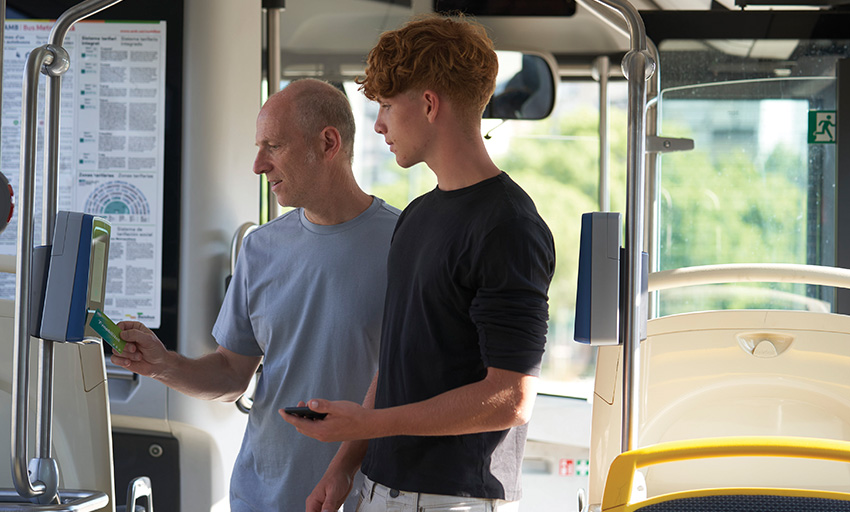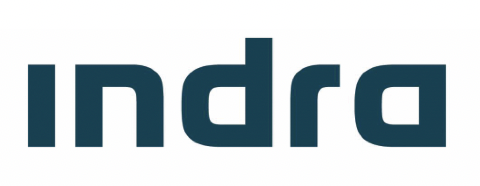Indra: Placing citizens at the centre of mobility

Berta Barrero, Senior Vice President of Mobility at Indra, speaks to eolas Magazine about the company’s role in transforming the mobility in cities and its plans in Ireland, including its toll interoperability management platform on Irish motorways and the project for the development of a rail traffic management system in the country’s new train control centre.
Could you explain what Indra is, what it does, and its role in the world of mobility?
Indra is a world-leading technology and consulting group. As a global group, we are responsible for about 57,000 jobs around the world, with business operations in over 140 countries. As a technology company, we are mainly focused on defence, air traffic management systems, and mobility air sectors. When we talk about mobility, we are mainly focused on critical systems for all stakeholders in the mobility sector, such as traffic, infrastructure, metro, railways, buses, ports, and airports.
Our main capabilities are in AFC systems and critical intelligent transport systems (ITS), traffic management systems for railways and infrastructure. We have about 2,500 employees in this department around the world. These experts in engineering and technology for infrastructures and transport, together with our leadership in the largest technological renewal programmes and in the main European Innovation Programmes, allow us to present a different proposal of solutions and products, as well as to lead unique and highly technologically challenging projects that will transform the future of mobility and transport on a global scale in the coming years.
Spain for us is roughly one-third of our revenue, but we have over 2,500 projects across more than 100 cities and over 50 countries, which places us in a privileged position to enter partnerships, synergies, and co-creation scenarios with the other sector stakeholders, helping to overcome the challenges facing passenger and freight mobility in our century.
What are the main challenges facing the development of sustainable cities and territories?
We are all aware that the population of the world will continue to grow in and around cities and all countries will now have to move in the direction of sustainable mobility, which will be achieved mainly through public transport. The main challenges that we have to face in this sphere is how the opportunities afforded by technology will allow us to integrate the different modes of transport. The resources in cities – roads, trams, railways – are limited and all the public services must be managed with efficiency and sustainability and the only opportunity to do that is to combine and integrate all means of public transport.
Public transport takes up 50 times less space and emits 70 per cent less CO2 than private vehicles. However, over 75 per cent of urban journeys are made in private, single passenger vehicles. These figures show that it is necessary to encourage and promote the development of zero-emission, multimodal and connected public transport. Additionally, there is a need to manage road traffic flows intelligently, efficiently, and safely. This should be done by placing citizens at the centre of the proposal for mobility services.
Given this reality, we could say that the current challenges for mobility are to accelerate digitalisation of transport infrastructures and services; to promote V2V (vehicle to vehicle) and V2I (vehicle to infrastructure) connectivity; and to move towards integrated and integrating governance of all mobility services in cities and territories, whatever the authorities, competent public administrations and existing operators’ realities may be.
Indra delivers technological solutions for safe, secure, and efficient traffic management on roads and in cities. We also deliver integrated public transport ticketing systems to guarantee the highest levels of service in terms of availability, accessibility, and reliability. This system gathers intelligence from the roads and from all operators in mobility to integrate all data. In the past, if you were an operator of highways, you would only work on highways, and it was the same for railway or bus operators. Indra technology works towards greater use of public transport, encourages car sharing and facilitates true intermodality for a more sustainable modal split, reducing traffic congestion and polluting emissions. Our solutions manage the daily mobility of 78 million people, preventing over 10 million tonnes of CO2 emissions annually, thus safeguarding nearly 3,000 lives and saving more than €6 billion for society.
What role can Indra play in transforming the mobility of cities and territories?
We work in more than 100 cities. At the moment, we are doing the most important ticketing project in Spain, the T-mobilitat in Catalonia, which is working to integrate 73 traffic operators to create more secure and efficient ticketing. We work with AI, blockchain, and automations of data, all to help the operator to manage the system and to allow quicker access for users, as well as more security and protection for them. This system gives citizens a more accessible and easier way to plan transport.

“The current challenges for mobility are to accelerate digitalisation of transport infrastructures and services; to promote V2V and V2I connectivity; and to move towards integrated and integrating governance of all mobility services in cities and territories, whatever the authorities, competent public administrations and existing operators’ realities may be.”
Indra and its technology have been key to making Spain a clear global benchmark in the development of transport infrastructures and systems with the highest standards of quality and safety.
Internationally, some of our most recent projects include: the HOV solution, which is high occupancy vehicle detection using AI, deployed on the operator Transurban’s highways in the United States; our ITS, free-flow tolling and connected vehicle solutions, also implemented in the USA, based on AI, cloud, machine learning and new radar technology (LIDAR); the intelligent BRT systems for Metro Brisbane in Australia; and in Ireland, the cloud-based platform for the interoperability of all toll roads.
We are currently developing two other highly innovative projects in Spain: the cloud integration of all the traffic control centres of Spain’s Directorate General of Traffic and the development of a mobility as a service (Maas) platform, which pioneeringly integrates all modes and means of mobility in six cities into a single ticketing system, with the latest technologies and payment systems (EMV, NFC), travel planning, traveller information in account based models, and management of low emission zones.
How relevant is research, development, and innovation (RD&I) for Indra? How is it participating in major European programmes? SESAR and ERJU (formerly S2R)?
When your main purpose is to be in the highest leagues of technology, investment in R&D is absolutely key because the technology is moving very fast at the moment, giving us lots of opportunities to improve our solutions. Indra is among the European leaders in innovation according to the EU Industrial R&D Investment Scoreboard, with €312 million allocated to RD&I in 2022 and €3.76 billion so far this century.
In that sense, we are participating in ERJU, the European programme for the digitalisation of railways. In this project, we are leaders, along with other companies, and are working on driver-less solutions, and digitalisation in public transport to deliver smoother transport for users that is more accessible from different types of technology.
We are also working on SESAR, which is the equivalent of ERJU for the air traffic sector. Regarding the needs of mobility, these are more or less the same in terms of the technology. You can implement them on airports or ports; while the functionalities might be different, the access control in an airport uses biometric recognition, which is the same for a train station.
It is very important for us to participate in these programmes because they give us a global perspective on mobility. This work has allowed us to achieve a profound technological sophistication of our proposal and the sustainable and profitable evolution of our business, which has been rewarded with the highest levels of trust from our customers, as shown in our quality surveys this year. It also helps us to attract the best talent who want to work with the latest technology.

“The three main solutions that we are implementing in Ireland so far are rail traffic management, tolling systems, and ITS systems for motorways, and these, together with the new projects that we hope to be awarded in the near future give us the confidence to deliver and increase our local capabilities.”
What is Indra’s strategy for Ireland?
Ireland is central for Indra. In the past, as a Spanish company, we have been more focused on Spain and Latin America, and we did not have a clear strategy for Anglosphere countries. Six years ago, our strategy changed, and we began to implement investment in new products and solutions. We think that there are now clear opportunities to have the chance to influence mobility in Ireland. We think that Ireland is a quite open country in terms of receiving new ideas.
In the last three years, we have been awarded very important and strategic projects in some of the most important technological areas in mobility. We have just implemented and put into operation the third-generation toll interoperability management platform (IMP) for Transport Infrastructure Ireland (TII). The new platform, built on an advanced clearing house system in Microsoft’s Azure cloud, simplifies electronic toll collection on the more than 900 kilometres of the country’s 12 toll roads, making it easier for toll service providers and toll collectors to exchange transaction and payment data. This allows users to use all motorways in the country with a single account.
Previously, our back-office technology had already been installed on six motorways, representing around 45 per cent of the State’s roads, including the M1, linking Dublin to Belfast.
Another major project we are currently working on in Ireland concerns the development of the new rail traffic management system for the country’s new train control centre, which has been entrusted to us by Iarnród Éireann-Irish Rail. This project is very important for us and gives us the opportunity to properly establish ourselves in Ireland.
The three main solutions that we are implementing in Ireland so far are rail traffic management, tolling systems, and ITS systems for motorways, and these, together with the new projects that we hope to be awarded in the near future give us the confidence to deliver and increase our local capabilities. We need projects to do that, and because of that we are very focused on future opportunities in Ireland.
How can Indra contribute to developing sustainable mobility in Ireland?
One of the main challenges in sustainable mobility is finding the right balance of integration between all modes of transport and all operators. You need to integrate all operators into one system that can allow them to manage in the most cost-efficient manner. To reduce emissions and define policies for public transport, you need to know how mobility is happening in a given region and this is how you do that.
Over the last 20 years, Indra has accumulated a track record of major mobility technology implementation projects around the world. Projects such as the implementation of control, communications and sales and reservation systems on the high-speed train linking Medina and Mecca in Saudi Arabia; the T-mobilitat project, which involves the implementation of a unified ticketing system for a region of 7.5 million residents; the AVL system for bus management in the city of Brisbane; and also in Saudi Arabia, the unified ticketing system in the city of Riyadh, the biggest ticketing project so far with more than six million residents. The management of these projects is very different, from deployments in mega cities like Riyadh with a greenfield implementation over a brand-new infrastructure to the brownfield site of the T-mobilitat with more than 75 operators where we have had to migrate a live system without interfering with commercial operation. We understand the risks and opportunities in both cases and work together with our customers assuring a successful deployment.
The company’s desire to be a technological systems integrator of large systems has led us to take on not only the technical implementation of projects, but also important operational tasks during their life cycle.
At Indra, we can bring to Ireland our international experience in managing complex programmes and our state-of-the-art technology in the mobility sector. Indra’s most valuable asset for the country, however, is that it brings this experience from its geographical and cultural proximity, together with a technological capacity that is highly competitive in relation to other western European countries.

E: gmadden@indracompany.com
W: www.indracompany.com





